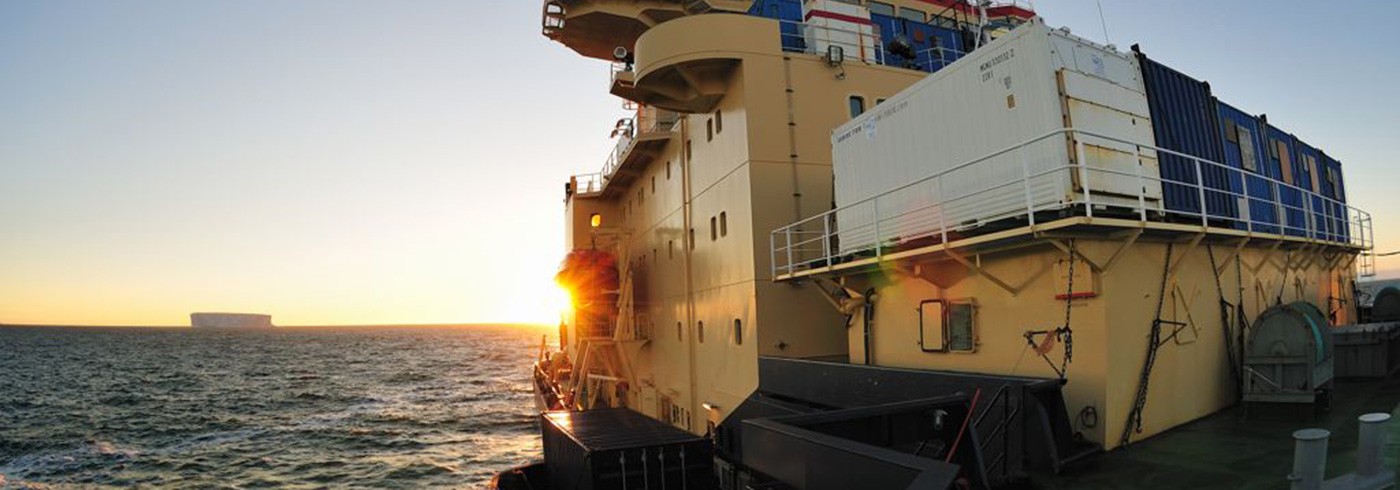When the icebreaker Oden was chartered by the National Science Foundation to break an ice channel to the McMurdo station on the Ross Sea, it opened the door for researchers to conduct trans-disciplinary studies in the remote and inaccessible Antarctic region. Over the winter, Oden started out doing icebreaking work to enable travel by boat to and from the American station. Afterwards, on the voyage back to South America, the icebreaker served as a research platform. This season around 20 days were spent on research activities while sailing from McMurdo to Punta Arenas, Chile, where the expedition ended.
In February 2010, the participants from Christchurch, New Zealand, were flown to McMurdo to sign on. Ten Swedish researchers worked on board during the expedition.
History of, and mechanisms leading to, post-LGM retreat of the West Antarctic Ice Sheet
This project was intended to study the factors underlying the retreat of the Western Antarctic ice sheet from the continental shelf in intensive stages. This will improve our understanding of the dynamics of the ice in the region. The researchers used Oden’s advanced multi-beam echo sounders to conduct geophysical studies of the bed morphology in order to obtain information about the Western Antarctic ice sheet’s retreat pattern since LGM (Last Glacial Maximum), and to find suitable locations for geological sampling sites.
Principal investigator
Martin Jakobsson
Stockholm University
Induced defences against ultraviolet radiation in Antarctic marine and freshwater systems
Two researchers studied the ways in which organisms in lakes and marine systems are coping with stress from the ultraviolet (UV) radiation that is striking Antarctica. The overall purpose of the study was to improve our understanding of the connections between large-scale environmental changes, such as increasing UV radiation, and biodiversity and evolutionary biology. Such connections could potentially enable predictions about the function and dynamics of current and, in particular, future ecosystems. The research group also collected specimens around the McMurdo research station before the start of the expedition.
Principal investigator
Lars-Anders Hansson
Lund University
Measurement of cosmic ray response function for an ice Cherenkov detector
During this season, the large neutrino telescope IceCube was under construction deep below the ice at the South Pole. A detector system for measuring high-energy cosmic radiation was also being built on the surface of the ice above IceCube. IceTop consists of a large block of ice equipped with light-sensitive photomultipliers that can measure the Cherenkov light that is produced when charged particles pass through the ice. The detector had to be calibrated in order to compare data from IceTop with data from other measurement systems. A so-called latitude survey was conducted on board Oden. A detector was carried on deck across a large range of latitudes, while measurement data were gathered continuously. The data-gathering process began as soon as Oden departed from Sweden, and continued until the icebreaker returned.
Principal investigator
Allan Hallgren
Uppsala University

